These are 20 statuettes, only some intact and most of them reduced to fragments, found inside the cave of the Arene Candide in the various layers of excavation, most of them on reworked ground and only a few of them come from levels dated with certainty to Middle Neolithic, precisely to the culture of square-mouthed vessels (5000-4200 BC); due to stylistic analogies, even the finds without context can be referred to the same chronological horizon. Given the large number of fragments, it is assumed that the breaking of the statuettes may have occurred intentionally, as part of an inhumation rite, even if none of these was found inside the burials, as for other specimens in Italian Neolithic contexts. Below is a list with the characteristics of each figurine:
- figurine no. 1: it is the first female clay figurine found by Nicolò Angelo Andrea Morelli during the excavations of the years 1885-87, missing only the lower part, made of unpurified clay with a mixture with a rough brown surface. The bust is straight and flattened, without the modeling of the waist and hips, with two small prominences to indicate the breasts while the arms are represented by two small conical protrusions of which the left is broken. The head, flattened and rounded, has no modeling of the face, but only two holes with traces of carbonized substance to indicate the eyes and above them two arched engraved lines represent the eyebrows; in the upper part of the head a furrow directed towards the forehead perhaps indicates the division of the hair into two masses. Dimensions: height 7,5 cm. width 4cm. (photo 2)
- figurine no. 2: it is a fragment of a clay female statuette also found by Prof. Morelli during the excavations of 1885-87, consisting of only the squashed bust on which the two hemispherical breasts are clearly distinct; her arms have been deliberately omitted by the artist, while her head and lower body are missing due to ancient fractures. As Bernabò Brea points out, these figurines, as well as many others found, are fractured in the same points, i.e. at the waist (where the figurines are generally thinner) and in the lower part at the natural separation between legs and thighs. The reasons are quite obvious, due to the technique with which they were shaped, as the two halves were worked separately and then juxtaposed and welded together with soft dough, a characteristic that determined the fragility of the piece. This figurine is of finer and more accurate workmanship than figurine no. 1 and, given the similarity with other specimens found in Arene Candide and in other Ligurian sites, it is assumed that it was a type of local production. Dimensions: height 3,5 cm. width 4,2cm. (photo 3)
- figurine no. 3: it is the head of a clay female figurine found within layer 23; despite being very damaged, it is considered the most interesting object due to the care with which the details are rendered. In particular, the head, almost half missing along with the whole face, has long and abundant hair which falls over the left shoulder and divides into two flaps, one falling behind the shoulders and the other descending in two smaller masses on the chest; oblique furrows with traces of ocher yellow would seem to indicate the ribbons that tie the hair. The traces of yellow-ochre, much more evident at the time of discovery, let us glimpse how important the polychrome was on the overall effect. Under the thick mass of hair emerges a section of the left cheek, the only remaining detail of the face. The statuette is made with a rough blackish mixture, covered with a very fine red-brown mixture containing grains of sand, a characteristic which has determined the fragility of the piece; in fact the missing head and face are due precisely to the partial detachment of the covering from the nucleus. Dimensions: height 5,7cm. base width 2,5cm. (photo 4)
- figurine no. 4: fragment of a seated steatopygian female statuette, consisting of the right half of the lower part, with the trunk broken at the base; the bent leg ends tapering without the modeling of the foot. Dimensions: from back to foot 5,7 cm. from buttock to knee 4,2 cm. (photo 5A).
- figurine no. 5: fragment of a seated steatopygia female statuette, consisting of the right half of the lower part, from the buttock to the foot, with traces of the attachment to the trunk and left leg with which it probably should have been joined almost up to the knee and free only in the lower part. The buttock is chipped, so only a small part of it remains. The leg was modeled separately and then joined to the buttock which in turn formed a sort of lining of the inner core; the very small foot is made evident by the detail of the toes with small notches to separate them from each other. Dimensions: length 5,8cm. (photo 5B).
- figurine no. 6: fragment of a seated female statuette, consisting of the right leg, of much rougher workmanship than the previous two; it is broken in the middle of the femur, at the height of the buttock. Very tapered, it has a chipping on the lower part which probably caused the foot to break. Dimensions: length 5,3 cm. (photo 5C).
- figurine no. 7: fragment of a seated female figurine, especially the right half of the lower part, split lengthwise; the huge buttock has broken off by detaching itself from the rest, therefore a section of the trunk remains, between the hip and the armpit (broken at the height of the abdomen) and the side together with the leg up to just below the knee. Dimensions: from armpit to knee 10,5 cm. from the buttock to the knee 8,5 cm. 3,9cm thick. (5D photo).
- figurine no. 8: fragment of a seated steatopygian female statuette, in particular the left half of the lower part, split longitudinally, broken at the bottom and top, therefore the detail of the thigh remains with protruding buttocks; it is made with a reddish-brown dough, while the inside is with a less cooked dough of large pebbles. The trunk is broken at the hips, with traces of the lower abdomen separated from the leg by a deep inguinal furrow. The leg is broken towards the knee. Dimensions: height 5,3 cm. width 8,5cm. 3,5cm thick. (photo 5E).
- figurine no. 9: small fragment of an elongated conical shape with a slightly curved end, perhaps representing the arm of a statuette. Due to the quality of the mixture and the way it is shaped, it does not appear to refer to a fragment of a vase. It comes from the 18H layer of the excavation and is similar to other finds. Dimensions: height 1,8cm. diameter 1,3-1,1cm. (photo 6A).
- figurine no. 10: fragment consisting of a leg shaped like a slightly curved cylinder, without modeling, probably part of a seated steatopygian statuette. It comes from the 19D layer of the excavation. Dimensions: height 4,4cm. width 2,1cm. (photo 6B).
- figurine no. 11: fragment consisting of an irregular mamelon which could be the truncated arm of a statuette. Due to the quality of the mixture and the way it is shaped, it does not appear to refer to a fragment of a vase. Dimensions: height 3,1 cm. diameter 2-2,6cm. (photo 6C).
- figurine no. 12: fragment consisting of a buttock and the beginning of a leg, almost up to the knee, of a seated figure, markedly steatopygia. It comes from the 18G layer of the excavation and is similar to another find (figurine 8). The surface is partly peeled off, therefore the buttock had to be larger in size; the proportions, color and quality of the mixture are very similar to statuette 8 and it has been hypothesized that they belong to the same idol or that the idol is of the same type. To confirm this hypothesis, an attempt was made to reconstruct it in plaster (see photo 7) Dimensions: height 4,5 cm. width 2,9cm. 2,4cm thick. The whole figurine, as reproduced in plaster, would be about 7 cm high. excluding the head (photos 6D and 7).
- figurine no. 13: fragment that would appear to be a limb, perhaps an arm or lower leg of a much larger figurine; the hypothesis has also been made that it could be the arm of the small head found in excavation layer 23 (figurine 3). The unpolished surface, probably deliberately made irregular, has however been polished. It comes from layer 21 F of the excavation. Dimensions: Height 7,9cm. diameter from 2,5 to 2,1 cm. (photo 6E).
- figurine no. 14: fragment that would appear to belong to the left side of a statue split lengthwise; it appears rigid, without modeling, but the way in which it tends to thicken downwards suggests that there is a gluteal attachment. It comes from the 24-25 C layers of the excavation. Dimensions: height 5,5 cm. diameter from 2,7 to 3,3 cm. (photo 6F).
- figurine no. 15: fragment consisting of the bust of a very stylized headless female statuette broken just below the waist; her arms are not mentioned and the flat bust is laterally rounded, while the round breasts are spaced apart. The statuette is very similar to another clay idol found by Prof. Morelli (statue 2); it narrows considerably at the waist with a hint of widening at the hips. The fracture at the base of the neck suggests the existence of a cylindrical head. The mixture is blackish brown in colour, rather coarse and without finishing. It comes from the 18 G layer of the excavation. Dimensions: height 4,4cm. width 4,5cm. thickness 2cm. (photo 8)
- figurine no. 16: fragment consisting of the bust of a very stylized headless female statuette; it has two small rounded breasts and is very similar to two other figurines, 2 and 15. The figure is broken at the sides and has a very narrow waistline. In the upper fracture, where the head hooked, there is a hole of about 1 cm. of depth that creeps into the bust. The mixture is fine internally gray in color and externally light brown. It comes from the level above layer 12 of the excavation. Dimensions: height 3,6 cm. width 2,2cm. (photo 9).
- figurine no. 17: fragment consisting of the head of a clay idol, cylindrical in shape without any modelling. The face bears a lump to represent the nose while on the sides two dots indicate the eyes and two arched incisions the eyebrows; below the nose the mouth is represented by a small hole from which an incision departs downwards, as if to indicate a probable "V" groove. The hair is not highlighted. The fine brown mixture bears traces of white mixture on the surface. It comes from the landslide of the trench walls during the 1940-42 excavations carried out by Bernabò Brea. Dimensions: height 4,6 cm. diameter 2,1cm. (photo 10)
- figurine no. 18: fragment consisting of the head of a clay idol, cylindrical in shape without any modelling. The face is stylized, with 3 deep holes to represent the eyes and mouth, while the protruding nose continues in the eyebrow arches on the high and spacious forehead. A vertical line descends from the hole in the mouth, while on the back the hair is rendered by a series of vertical and parallel strokes, slightly incised. The sample is very similar to head n. 17. It comes from the lowest level of layer 12 of the excavation. Dimensions: height 3,5 cm. (photo 11)
- figurine no. 19: female clay figurine, modeled in the round and broken at the level of the belly with an oblique fracture. The cylindrical head is slightly inclined backwards and the hair descends compactly, resting on the shoulders to form a slight "U" on the back, while two locks moved forward end at the base of the neck. The face is an oval from which the nose and eyebrow arches stand out in the typical "T" pattern, while the mouth and eyes are not indicated. The arms are folded on the chest, under the small rounded breasts, widely spaced. The neck is very swollen, as if to indicate the presence of a goiter. The mixture is rich in incorporated limestone and tiny flakes of mica; the internal mix is dark brown, the external brick red. The figurine was recovered out of context and dated to 4900-4250 BC Dimensions: height 8,2 cm. shoulder width 6,1 cm. (photos 12 and 13)
- figurine no. 20: fragmentary head of a statuette, with only a hint of the nose (photo 14)
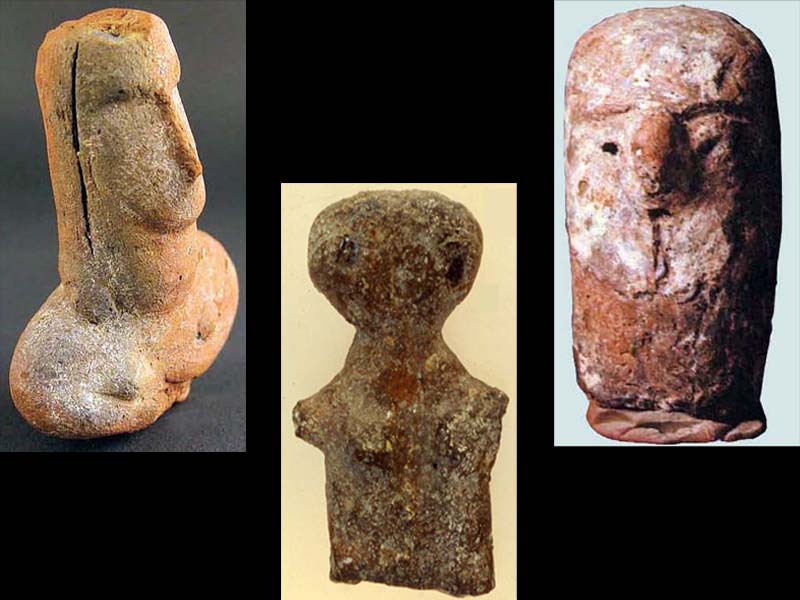
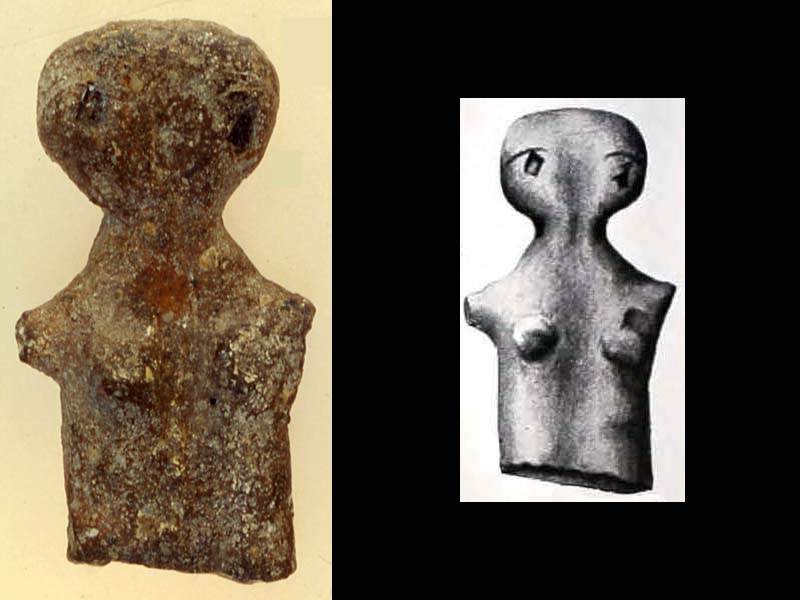
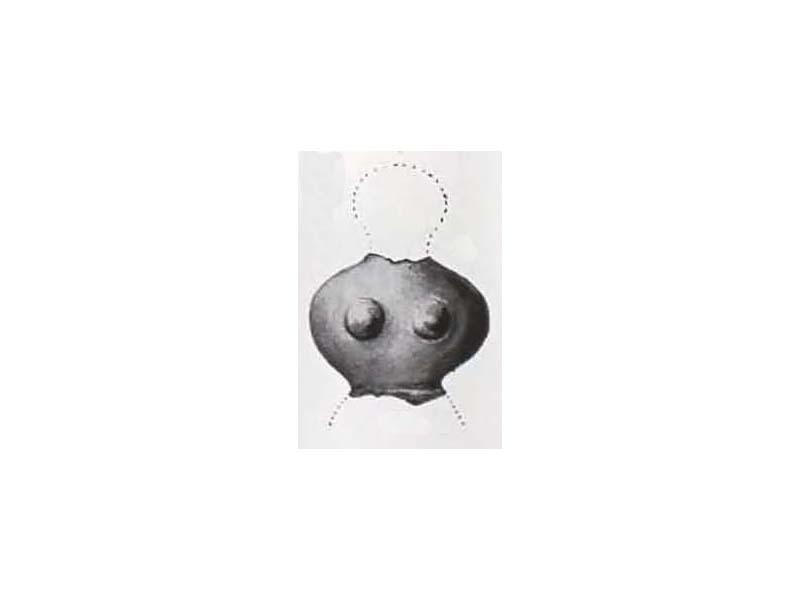
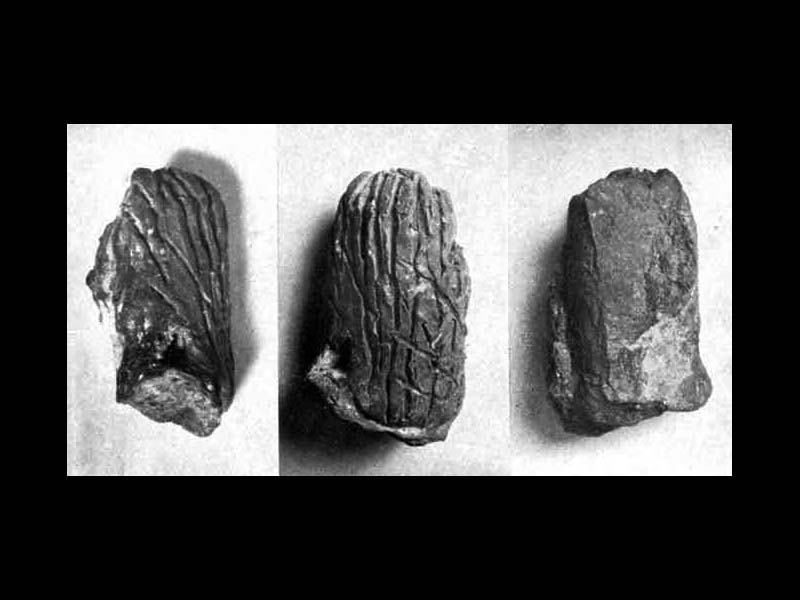
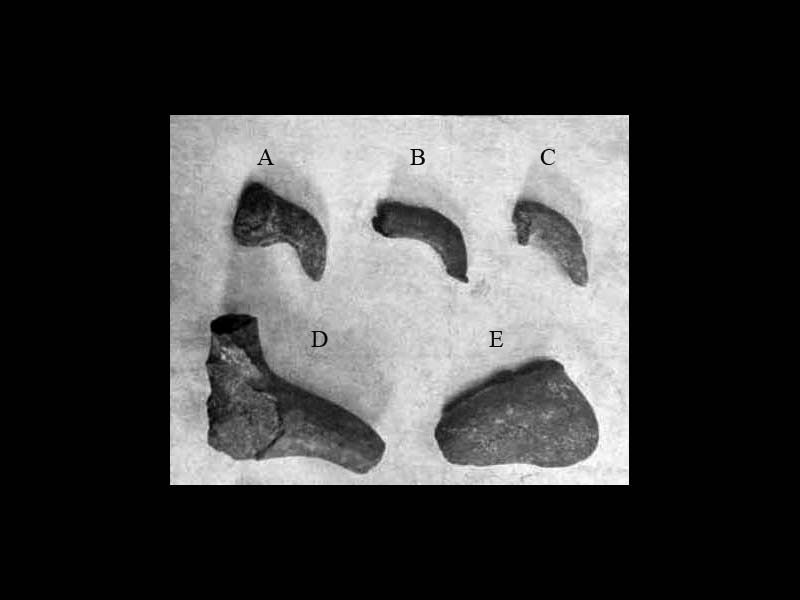
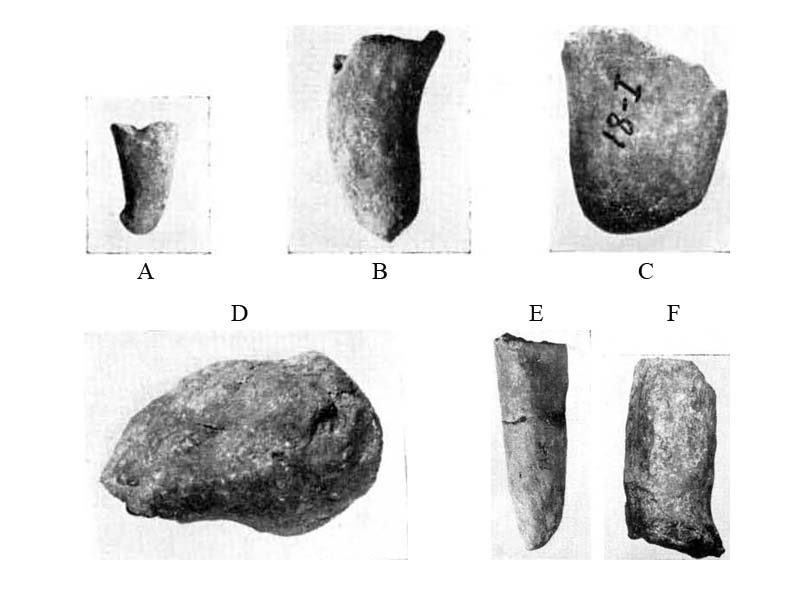


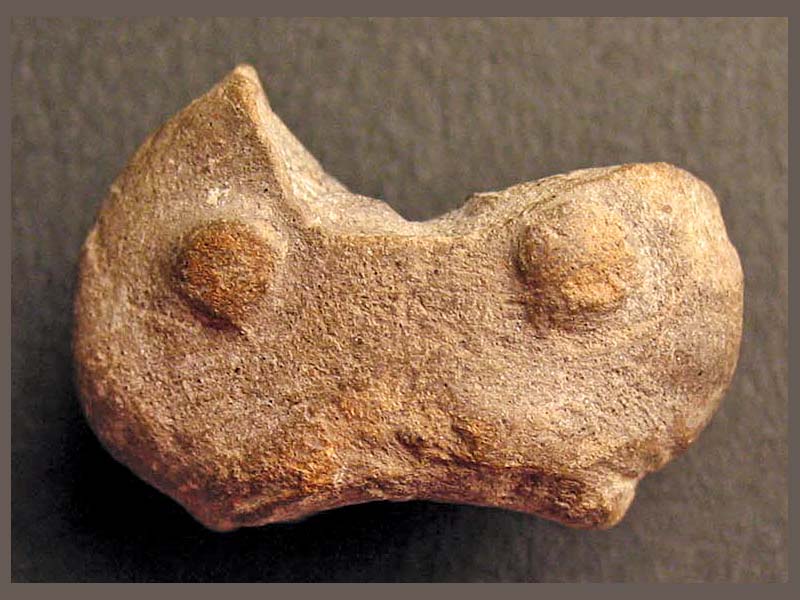
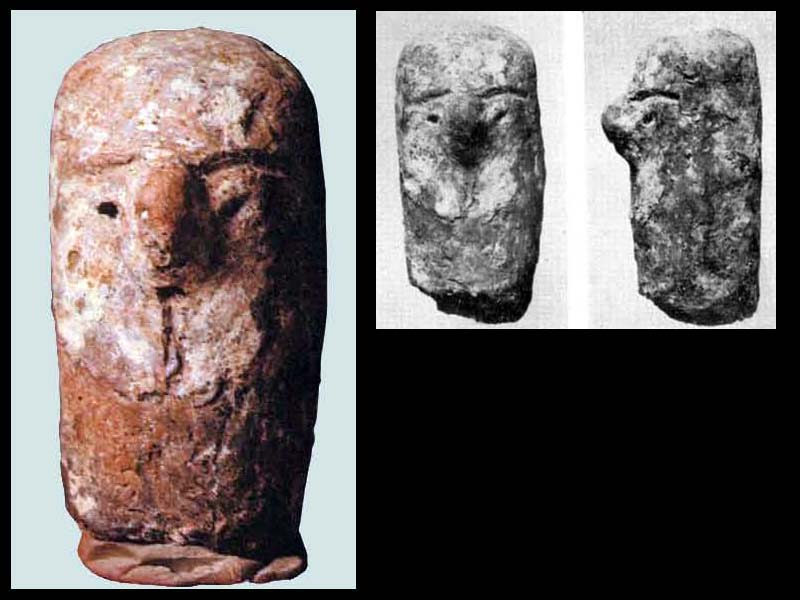
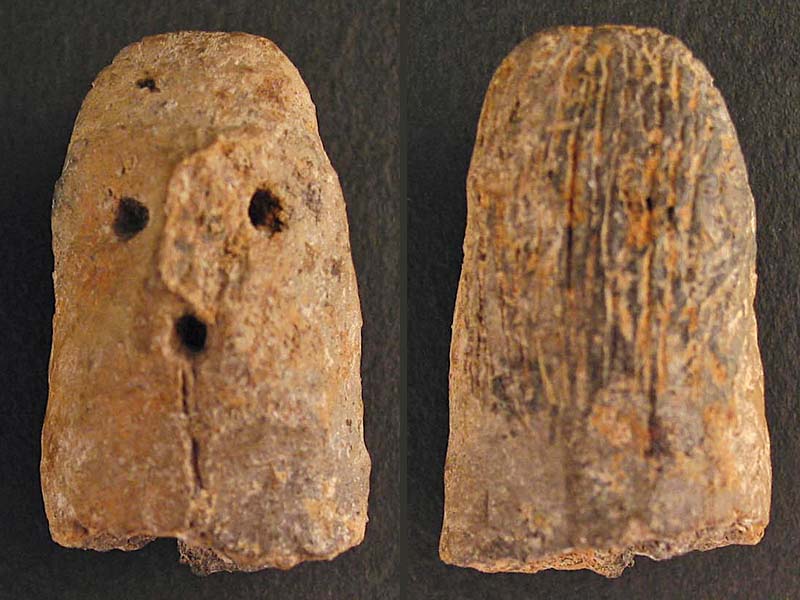
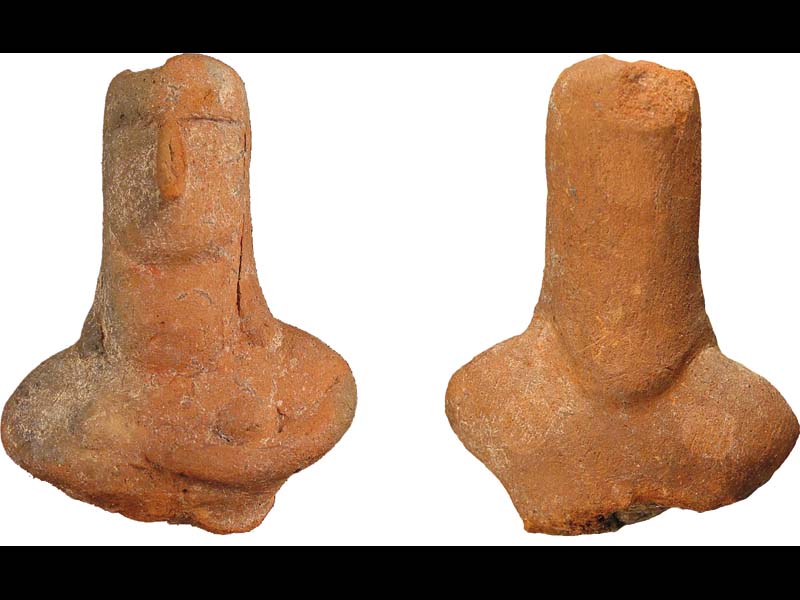
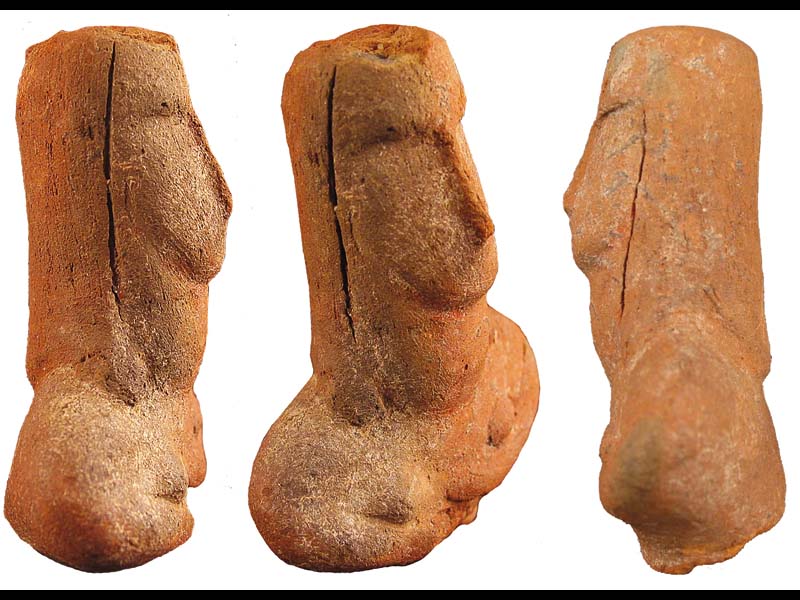

Historical notes
The first explorations of the cave took place in June 1864 by Arturo Issel, who, realizing the great potential of the site, promoted excavation campaigns that lasted from 1864 to 1876. In the same period, one of his pupils also took part in the excavations, Nicolò Angelo Andrea Morelli, to whom important discoveries are to be attributed, especially in subsequent campaigns carried out independently, including a large number of Neolithic burials and the first clay statuette found in 1886.
However, an intense and more precise excavation activity was carried out by Bernabò Brea in the years 1940-42 and 1948-50, a work which led to the definition of the stratigraphy with the identification of the different cultural phases that occurred on the site. In the 70s Santo Tinè with the collaboration of Roberto Maggi continued to explore the levels of the Ancient and Middle Neolithic. Activities to safeguard the site were undertaken in the 90s. For further information on the history of the excavations, see the report "Arene Candide: history of the excavations".
The cave of the Arene Candide measures 70 x 20 meters and has an elongated shape in the east-west direction, with the opening divided in two by an enormous boulder, currently welded to the vault by stalagmite concretions. The internal part is divided into 3 zones: the longer and narrower central one is called the "Issel chamber"; the one on the left, the "Morelli room", has a circular shape from which short tunnels branch off; the one on the right, the "Gandolfi room" is smaller, with the entrance marked by a rocky pillar, full of concretions and stalagmites.
CARD
LATEST PUBLISHED TEXTS
VISIT THE FACTSHEETS BY OBJECT

